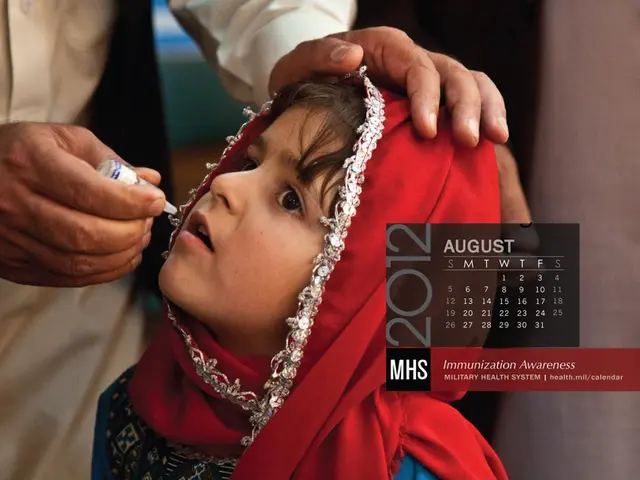Connection between Breast and Ovarian Cancer: Identified Links and Associated Risks
Cancer Connection: Unraveling the Link Between Breasts and Ovaries
There's a strong bond between breast cancer and ovarian cancer, mostly due to shared genetic roots. This association becomes especially noticeable in individuals carrying mutations in the BRCA1 and BRCA2 genes.
These two types of cancer share some underlying genetic risk factors. Folks who have them might face an elevated risk for both.
Factors like advanced age, excessive weight, and never carrying a pregnancy to term are common threads linking breast and ovarian cancer. Some of these risk factors can be managed, for instance, by maintaining a moderate weight.
Do they spark a chain reaction?
Studies reveal that people who've battled breast cancer could see an increased likelihood of developing ovarian cancer. This hikes up significantly when breast cancer links back to genetic mutations such as BRCA1 or BRCA2.
Research suggests that the odds of developing subsequent primary ovarian cancer for breast cancer survivors are roughly double. For those with ovarian cancer, the risk of subsequent breast cancer increases by 1.6 times, albeit the risk varies based on the time since the initial diagnosis.
Ovarian cancer survivors might also find themselves facing an elevated risk of breast cancer, often linked to genetic mutations.
Other risk factors on the horizon
BRCA1 and BRCA2 mutations are the most significant shared risk factors, and research points to around 50% of families with ovarian and breast cancer having BRCA1 gene mutations, while roughly 20% have BRCA2 mutations.
Additional shared risk factors for breast and ovarian cancers include:
- a family history of either cancer
- later age, typically ovarian cancer occurring in individuals over 40 years, and breast cancer in those ages 55 or older
- overweight or obesity
- having a first child after 30
- never having children
- not breastfeeding
- hormone therapy post-menopause
Can we lower the risk?
Some risk factors like a history of breast or ovarian cancer cannot be changed. Managing these unchangeable risk factors can involve careful monitoring, lifestyle adjustments, and, in some cases, preventive medical procedures.
For individuals with a history of breast or ovarian cancer, healthcare professionals may advocate for more frequent and thorough screenings to catch any new cancers early. This can include undergoing:
- regular mammograms
- breast MRI scans
- pelvic exams
- transvaginal ultrasounds
- CA-125 blood tests
Genetic testing for BRCA1, BRCA2, and other relevant mutations pave the way for the most effective strategies for monitoring and prevention. For those carrying these mutations, doctors may consider additional options like prophylactic surgeries aimed at preventing the occurrence or spread of cancer.
Changeable risk factors in our hands
Modifiable risk factors encompass:
- Weight: Achieving and maintaining a healthy weight can lower the risk of breast and ovarian cancer. Obesity may lead to higher estrogen levels, which can increase the risk of breast cancer.
- Regular exercise: Regular physical activity can help reduce the risk of breast cancer. Limited evidence also supports a link between exercise and ovarian cancer. Exercise can assist in maintaining a healthy weight and may also have direct anticancer effects.
- Alcohol: Cutting back on alcohol intake can lower the risk of breast cancer. The risk rises with alcohol consumption, so healthcare professionals may suggest limiting intake.
- Oral contraceptives: Oral contraceptives might lower the risk of ovarian cancer. However, they may increase the risk of breast cancer slightly. Discussing contraception options with a doctor is essential to weigh the risks based on individual circumstances.
The forward-looking outlook
A 2020 observational study suggests that individuals diagnosed with both primary breast cancer and primary ovarian cancer possess fairly positive prospects, with 5- and 10-year overall survival rates around 90%.
The prognosis is generally better when the time gap between the two cancers is longer. However, ovarian cancer following breast cancer is more likely to involve a later diagnosis, which can impact survival.
Age during the first diagnosis of cancer and the time between the two are critical indicators of overall survival.
Various factors can affect a person’s outlook. If someone is curious about their individual outlook, speaking with their healthcare team is highly recommended.
When to consult a doctor
People should consult their doctor if signs or symptoms of breast or ovarian cancer show up, especially with a personal or family history of these diseases.
Staying vigilant for signs of recurrence or a second cancer after a previous diagnosis of breast or ovarian cancer is crucial. Early detection and prompt treatment are vital to improving outcomes.
Cancer resources
To find more evidence-based information and resources for cancer, check out our dedicated hub.
Frequently Asked Questions
People with ovarian cancer might have an increased risk of these cancers:
- bladder cancer
- bile duct cancer
- colorectal cancer
- acute leukemia
- melanoma of the eye
Breast cancer could metastasize (spread) to the ovaries, although this is relatively uncommon. When it occurs, it typically develops in individuals with advanced breast cancer. This might be more likely in breast cancers that are hormone receptor-positive or in people with BRCA mutations.
People at high risk of ovarian cancer include those who have:
- BRCA1 or BRCA2 gene mutations
- a family history of ovarian, breast, or colorectal cancer
- Lynch syndrome
- endometriosis
- never been pregnant
- had a late first pregnancy
- advanced age (over 40 years)
The Lowdown
A significant link exists between breast cancer and ovarian cancer, primarily due to shared genetic mutations, particularly in the BRCA1 and BRCA2 genes. People with these mutations have a significantly higher risk of developing both cancers.
Additionally, a personal or family history of one cancer increases the risk of developing the other, underscoring the importance of genetic testing, regular screenings, and preventive measures for those at higher risk.
People who have battled breast or ovarian cancer can team up with their healthcare team to monitor signs of another cancer.
- Studies suggest that people who've battled breast cancer could see an increased likelihood of developing ovarian cancer, particularly when breast cancer is linked to genetic mutations such as BRCA1 or BRCA2.
- Ovarian cancer survivors might also face an elevated risk of breast cancer, often linked to genetic mutations.
- BRCA1 and BRCA2 mutations are the most significant shared risk factors, and research points to around 50% of families with ovarian and breast cancer having BRCA1 gene mutations, while roughly 20% have BRCA2 mutations.
- Modifiable risk factors that can be altered to lower the risk of both breast and ovarian cancer include maintaining a healthy weight, regular exercise, limiting alcohol intake, and discussing contraception options with a doctor.
- A 2020 observational study suggests that individuals diagnosed with both primary breast cancer and primary ovarian cancer possess positive prospects, with 5- and 10-year overall survival rates around 90%.
- People at high risk of ovarian cancer include those who have BRCA1 or BRCA2 gene mutations, a family history of ovarian, breast, or colorectal cancer, Lynch syndrome, endometriosis, never been pregnant, had a late first pregnancy, and advanced age (over 40 years).








